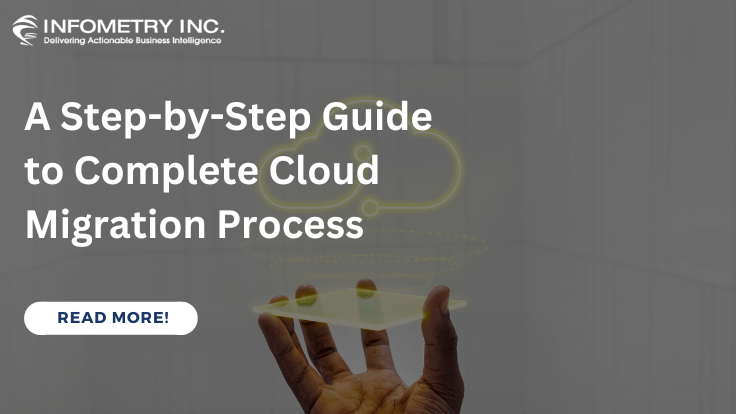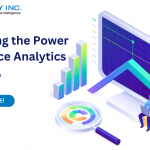
A Step-by-Step Guide to Complete Cloud Migration Process
April 3, 2023
Unlocking the Power of Finance Analytics for FP&A
April 6, 2023Sales & Marketing analytics is essential to understand the marketing impact and predicting marketing trends to drive sales. Businesses use various Sales & Marketing analytics processes to improve marketing strategies and the overall performance of an organization. Sales & Marketing analytics include statistics and predictive modelling to gain valuable insights from the data and take necessary actions for their business. There are various types of marketing analytics that companies use for analyzing their marketing strategies.
Sales and marketing analytics are becoming increasingly important as businesses strive to understand their customers better and improve their overall performance. With the rapid growth of digital marketing channels and the increasing complexity of sales processes, enterprises are turning to data analytics to gain a competitive edge. In this guide, we’ll explore the latest sales and marketing analytics trends for 2023 and beyond.
But First, Let’s Know What’s Sales & Marketing Analytics?
Sales and marketing analytics is collecting, analyzing, and interpreting data related to sales and marketing activities to improve business performance. It uses various data sources, such as customer behaviors, sales history, market trends, and other relevant information, to identify patterns, insights, and opportunities that can help optimize sales and marketing strategies.
- Sales and marketing analytics can be used to:
- Identify and target potential customers
- Understand customer behaviors and preferences
- Optimize pricing and promotions
- Evaluate and improve marketing campaigns
- Forecast sales and revenue
- Analyze competitor activity
- Monitor and improve customer satisfaction
By using sales and marketing analytics, businesses can gain deeper insights into their customers and markets and make data-driven decisions to drive growth and profitability.
Here Are Top Sales & Marketing Analytics 2023 Trends
Predictive Analytics
It uses historical data to forecast future events and trends. In sales and marketing, this can predict customer behaviour, such as which customers are most likely to purchase or which marketing campaigns are likely to be successful. With the help of machine learning algorithms, predictive analytics can also identify hidden patterns and relationships in the data, allowing businesses to make more accurate predictions.
Customer Journey Analytics
Customer journey analytics analyses customer interactions across all touchpoints and channels, from initial awareness to post-purchase follow-up. By mapping the customer journey and analyzing the data, businesses can identify areas of friction and opportunities for improvement. This can lead to more personalized customer experiences and higher conversion rates.
Marketing Automation
It uses software to automate repetitive marketing tasks, such as social media posts, sending emails, and targeted advertisements. By automating these tasks, businesses can save time and resources while delivering more targeted and personalized messages to their customers. Marketing automation can also track and analyze customer interactions, allowing companies to make more data-driven decisions.
Artificial Intelligence
AI is becoming increasingly important in sales and marketing analytics. AI-powered tools can evaluate large volumes of data, identify trends and patterns, and make predictions based on that data. This can help businesses to personalize their marketing messages, identify the most promising leads, and optimize their sales processes.
Real-time Analytics
Real-time analytics allows businesses to monitor and analyze customer interactions as they happen, providing instant insights into customer behaviors and preferences. This can optimize marketing campaigns, identify opportunities for upselling or cross-selling, and provide personalized recommendations to customers in real time.
What Makes Our INFOFISCUS Sales & Marketing Must-Have for Organizations?
Marketers today seek real-time visibility of ad spend, customer segmentation, PPC performance, CAC, MQL, and Freemiums, among other metrics. INFOFISCUS is a comprehensive solution for sales teams and marketers to make confident decisions that improve sales, increase returns on marketing investment, and adapt to changing markets. It redefines the way sales and marketing teams analyze their campaign effectiveness, ad spend, customer segmentation, PPC performance, cost per lead, customer acquisition cost, new logos, freemiums, click, MQL, SQL, spend, web traffic, clickthrough, email campaign effectiveness, and more in real-time.
By providing complete data analysis, INFOFISCUS enables sales and marketing teams to make informed decisions and take swift action. With real-time insights, businesses can optimize their campaigns, increase their customer base, and improve their ROI, all while remaining agile in a dynamic business landscape.
INFOFISCUS Sales & Marketing Analytics leverages cutting-edge technology, using state-of-the-art ETL/ELT from Informatica/Matillion and a premier Data Cloud from Snowflake. It is also compatible with all industry-leading visualization tools like Tableau, PowerBI, and Looker. Additionally, It offers a BYOL (Bring Your Own License) model, which reduces customer onboarding efforts, costs, and time.
Here are the Top Features of INFOFISCUS Sales & Marketing Analytics
- Ready-to-use dashboards and scorecards are included.
- It can integrate with numerous marketing channels.
- BYOL (Bring Your Own License) model is supported.
- Pre-defined KPIs and templates are available.
- It allows tracking return on investment, cost per lead, and sales cycle time versus sales stage, among others.
- It can be deployed within weeks.
These features make INFOFISCUS an obvious choice for marketers and leaders who need to analyze metrics such as Ad Spend, ROI, Pipeline, Sales Cycle, Email and Call Metrics, Productivity, ARR, and more. By leveraging these tools, businesses can make quick, data-driven decisions for sustainable growth.
Conclusion
Sales and marketing analytics are becoming increasingly crucial for businesses seeking a competitive edge. By leveraging the latest trends in data analytics, establishments can gain deeper insights into their customers, optimize their marketing campaigns, and improve their overall performance. With the right tools and strategies, businesses can unlock new options for growth and success in 2023 and beyond.




